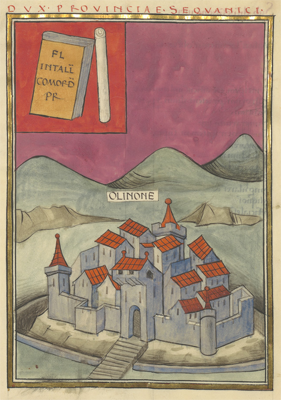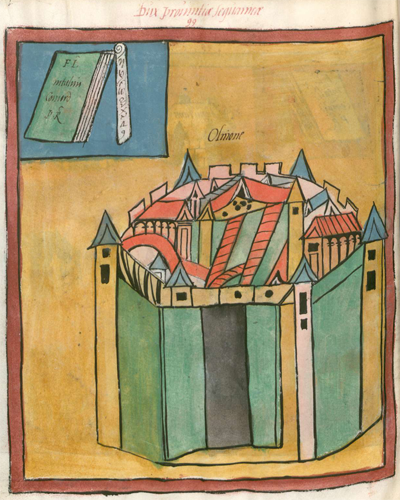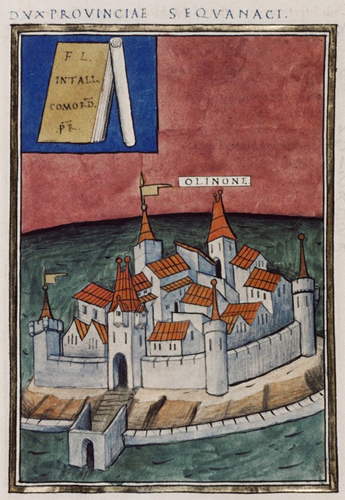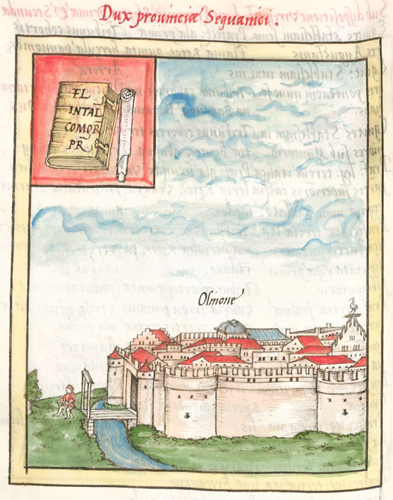
This page created 18 January 2003, and last modified: 7 February 2015 (bottom three frontpiece illustrations added)


Above: frontpiece from the Parisian manuscript (P). |
Just a single limitanei unit is listed as being under the command of the Duke of the Province of Sequanica:
Milites Latavienses, stationed at Olinone Its shield pattern is not illustrated. The unit's entry is numbered 149.2 in Ingo Maier's numbering scheme.
|

Above: frontpiece from the Munich manuscript (W). |
Note that "Olinone" is given as Olicione in P; Seeck gave it (OC.XXXVI.5) as Olitione. This would appear to correspond to modern Oelenburg in Reiningue, Alsace. Sequanica was the area around Besancon (Roman Vesontio) and the upper Rhine; its territory would this appear to be somewhat similar to the "Tractus Argentoratensis" of the defunct Comes Argentoratensis, centred on Strasbourg and the middle Rhine. Although the Notitia lists just a single unit in the province, various units would appear to have previously been stationed in the province, such as the Vesontes, which takes its name from the province's capital, Vesontio, and the Sequani, named for the area as a whole. Their shield patterns are shown below:

|
The above patterns are taken from the Bodleian (O), Parisian (P), and Munich manuscripts (M: 1st set; W: 2nd set), plus the Froben edition (B), and for the Sequani only, the Frankfurt fragment (Ff). In addition to these two units, there is an ala secunda Valeria Sequanorum listed under the Dux Raetiae; being a limitanei unit, its shield pattern is not recorded.
Note that although the province is listed (85/6.44) in the Notitia as being one of twelve provinces in the west that has an associated Duke (Dux), the Duke himself is not in the list (98/9.9 ff) of Dukes coming under the control of the Magister Peditum (the Dux tractus Armoricani et Nervicani is also absent from this list). This may indicate that the province had ceased to effectively exist at some point over the working lifetime of the western half of the Notitia (ca. 395 - 425), with some, but not all, of the entries connected with it being deleted. The corresponding officer in charge of the civilian province is listed (124.11) as being a President (praeses), who is subordinate to the the Vicar (vicarius) of the Diocese of the Seven Provinces, and who is himself subordinate to the Praetorian Prefect of the Gauls; the civilian province's name is given as Maxima Sequanorum ("Greater Sequanica").
Below are shown the frontpieces from the Bodleian manuscript, O; the Froben printed edition, B; and the first set of pictures in the Munich manuscript, M:



Note how the Froben edition has reused the same printing blocks used for the illustration for the Comes Argentoratensis.

Return to the Notitia index page.